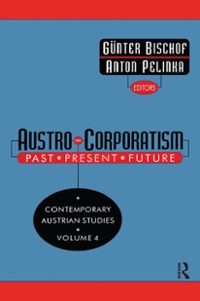,. Hi expert kindly solve
It is postulated that a reasonable demand-supply model for the wine industry in Australia, under market clearing assumption, would be given by Qt = ontop" +azpi tash toA tu demand Qt = Po+ BIP"" + ByS + the supply where Q: = real per capita consumption of wine, Po = price of wine relative to CPI, Ph = price of beer relative to CPI, Y, = real per capita disposable income, A, = real per capital advertising expenditure, and S, = storage cost. CPI is the Consumer Price Index. The endogenous variables in this model are @ and P", and the exogenous variables are p, Y, A and S. The variance of wt and t are, respectively on, and of, and Cov(us, ") = Our # 0. The errors do not exhibit any correlation over time. (a) (5 marks) Provide the reduced form for Pu. (b) (5 marks) The OLS estimation of the demand function, based on annual data from 1955-1975 (7 = 20), gave the following results (all variables are in logs and figures in parentheses are t-ratios). Q+ = -23.651 + 1.158PM -0.275 P +3.212 Y, -0.603 At (-6.04) (4.0) (-0.45) (4.5) (-1.3) All the coefficients except that of Y have the wrong signs. The coefficient of P" (price elasticity of demand, o) not only has the wrong sign but also appears significant. Explain why the OLS parameter estimator may give rise to these counter-intuitive results. You are expected to use your results in answer (a) to support your answer.\fThe Seneca Corporation manufactures lamps. It has set up the following standards per finished unit for direct materials and direct manufacturing labor. The Seneca Corporation manufactures lamps. It has set up the following standards per finished unit for Assume that there was no beginning inventory of either direct materials or finished units. During the direct materials and direct manufacturing labor. month, materials purchased amounted to 98,800 b, at a total cost of $583,290. Input price wirianous (Click the icon to view the standards.) and isolated upon purchase, Input-eficiency variances are baolated at the time of usage. The number of finished units budgeted for January 2017 was 9,650: 9,150 units were actualy produced. X IT (Click the icon to view actual data.) Standards Requirement 1. Compute the January 2017 price and efficiency variances of direct materials and direct $ 54.00 Let's begin by calculating the actual input at the budgeted price. (Round your answers to the nearest who Direct materials: 10 lb. at $4.40 per lb. Direct manufacturing labor: 0.5 hour at $32 per hour 18.00 Actual Input Budgalod price Coal Direct materials (purchas) 531 520 Print Done Direct materials (usage) 5.40 Direct manufacturing labor 4.700 32.DO 150 400 Next determine the formula and calculate the costs for the flexible budget Budgeted input for actual output Budgeted price Flexible budiget cost Direct materials 98,500 5.40 531,900 Direct manufacturing labor 3200 157,800 Now compute the price and efficiency variances for direct materials and direct manufacturing labor. Label each wines as favorable (F) or underearable (U). Price Efficiency Actual Data . X Dingot materials F Direct manufacturing labor F Actual results in January 2017 were as follows: Direct materials: 97,000 lb. used Direct manufacturing labor: 4,700 hours 168,828 Print Done1. Some (More) Math Review a) Let N = 3. Expand out all the terms in this expression: Cov Xi b) Now write out all the terms using the formula from last class for variance of a sum: Var( X:) = _Var(X) + > > Cov(X, X;) i-1 1=1 i-lj=1ifi Verify that (a) and (b) are giving you the same thing. Hint: Cov(X, X) = Var(X). c) Suppose that D is a roulette wheel that takes on the values {1, 2, 3} all with probability 1/3. What is the expected value of this random variable? What about the variance? d) Now suppose that M is another roulette wheel that takes on the values {1, 2,3} all with probability 1/3. Solve for the expected value of 1/M. e) Finally, suppose that D and M are independent. Solve for: E Hint: You do not need to do any new calculations here. Just remember that for independent RVs, E(XY) = E(X)E(Y). f) Does E(D/M) = E(D)/ E(M)?\fis the vector of residuals. H = (hy) = X(X X) 1X] is the hat matrix. Answer the following questions, giving a brief justification in each case: 1. (True - False) ; is always independent of B, for i # j. 2. (True - False) (ely)/(n - p - 1) is an unbiased estimate of g?. 3. (True - False) He and (I - H) are independent. 4. (True - False) |Hell? ~ Xp+1. Consider adding a covariate u E R" to get the model, y = XB + yu+, and assume Xu =0, yER. Let (Bnew, 5) be the LSE of parameters (8, y) in this new model. Answer the following 5. (True - False) Anew = # where B is LSE of # in the original model (1). 6. (True - False) ; and Anew are independent. 5. (True - False) B new = B where B* is LSE of B in the original model (1). 6. (True - False) y" and Bnew are independent












